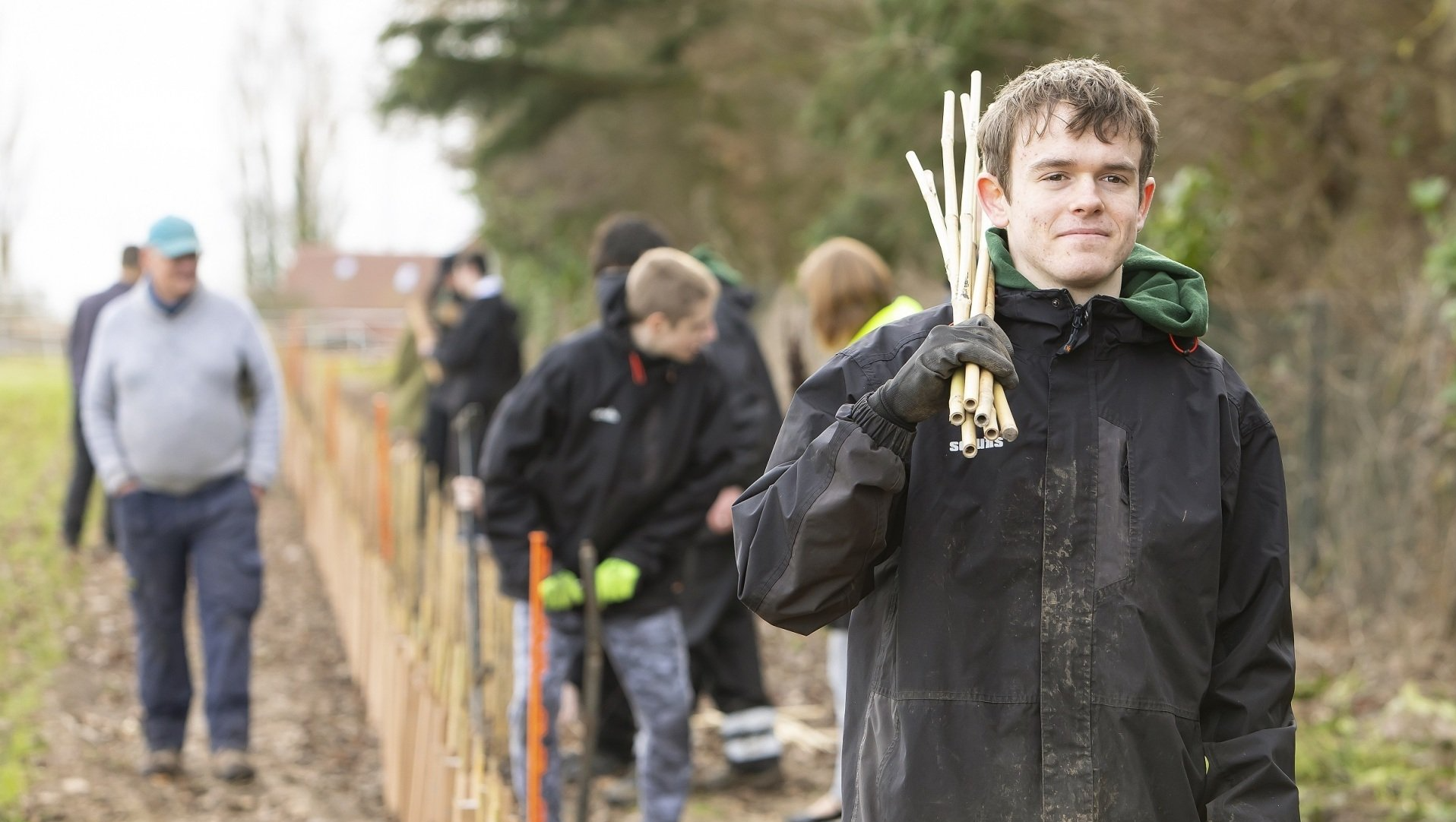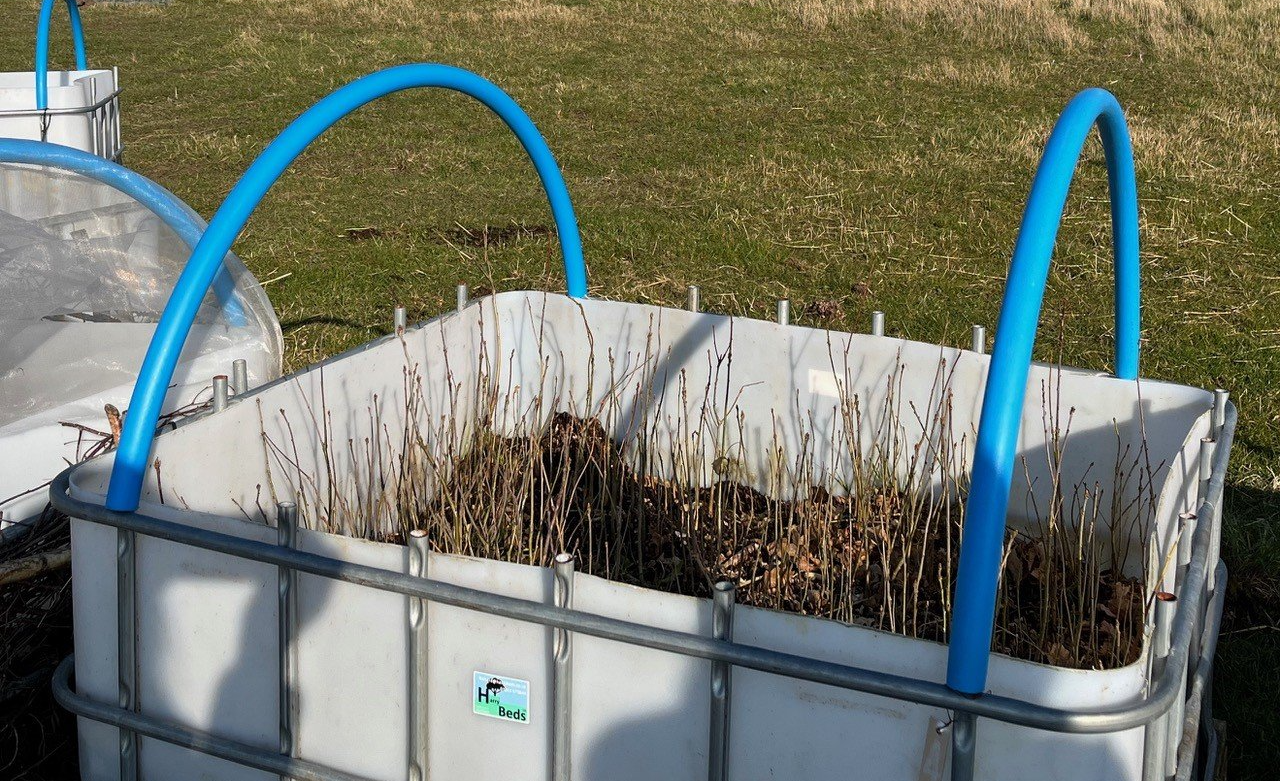ROAR - The Big Green Internet
The Big Green Internet Project is on track to have planted over 150,000 trees and hedgerow whips by the end of this winter.
This extraordinary achievement is the brainchild of Mike Whadham - who wants to see Epping Forest connected to the sea with a contiguous line of green.
His dream is to see the disparate pockets of woodland connected up so that wildlife can move uninterrupted across the Essex landscape - as he explains here.
WildEast, as a movement of people and nature, is an inspiration to
The Big Green Internet (TBGI) project. WildEast, with its ambition to deliver change on a regional scale encourages TBGI to drive its pan-Essex ambitions. We are delighted to be WildEast champions and to mark our progress on the very southern border of the
Map of Dreams. This winter we hope to pass 150,000 trees and hedgerow whips planted, so do listen out for our WildEast ROAR from the 'deep south' of Essex.
The story begins ten years ago when I was busy planting small woods in the east of Essex. It suddenly dawned on me that the biodiversity problem I was trying to address wasn't simply the small number of woodlands in the area, but their lack of connectivity. As I looked around the landscape I noticed how many of the woodlands survived as islands in a sea of intensive agriculture, unable to communicate with one another, in an ecological sense.
Armed with a set of OS maps, I began the task of identifying the distribution of woodlands across Essex, and as I did so a story began to emerge. To the south of the A12 was a series of woodland clusters running in two parallel lines. One line originating at the North Sea coast near Frinton, and the second line originating near Southend-on-Sea, with both meeting near Brentwood and terminating at the iconic Epping Forest.

To understand the reasons for this linear distribution of woodlands, we must go back 450,000 years to the Anglian ice age when most of Essex (but not all) was covered by a great sheet of ice. The A12 tracks the southern edge of the ice sheet. To the north, the county was covered by ice and a chalky boulder clay created underneath, eventually becoming fertile farmland and consequently, relatively unwooded.
To the south lay a pre-glacial landscape of London clay-derived soils and hills of sandy clays that were still intact and which were superimposed with glacial derived outwash and wind-blown loess, along with the remnants of the ancient river Thames and Medway. It was this geological landscape that led to the clusters of woodlands that sit atop the hills. Epping Forest is a classic example. This linearity in woodland distribution means that as little as 150 miles of new wildlife corridors would be needed to connect most of these woodlands back together. It was a challenge I decided to grasp with both hands, and in doing so, The Big Green Internet project was born.
A first task was to set about planting a 500-metre long wildlife corridor between two woods, to experiment with the idea of connecting them together. A decade later, the wildlife corridor I planted is now a healthy mix of trees and grassland that is full of life. TBGI is not just planting wildlife corridors, the project also aims to plant a million hedgerow whips too, just for fun !! Mostly in the district of Tendring, a particularly treeless landscape and still within the boundaries of the Map of Dreams.

One of the most exciting developments has been to enlarge our planting crew to include college students from the
Market Field Special Educational Needs college in Clacton on Sea. Many of these school leavers struggle to find work, so planting hedgerows and wildlife corridors is a great way to help them transition into the workplace. They earn a full days wage. It’s a good initiative for us as employers too, as we receive coaching and mentoring to help us become more skilled as SEN employers. Market Field Farms is the charity set up to manage this programme and The Big Green Internet Project is its first commercial sponsor.
There is more good news for The Big Green Internet. As we expand we are creating employment and taking on our first full-time member of staff (Charlie) to help coordinate and deliver the planting activities. Having worked on the project for two years we want to extend his knowledge and leadership skills so we are enrolling him on a distance learning course, with the aim of achieving a BSc in ecology. Charlie is our 'Mr Million' - he'll be driving the million hedgerow whip project whilst I run the wildlife corridor project.
We do though, need to inject some science into the project, particularly a metric to show that we are delivering the ecological results we want. We have chosen to measure soil mycorrhiza populations and we are working with Professor Alex Dumbrell, chair of the Department of Life Sciences at the University of Essex. Starting October 2023 The Big Green Internet project will sponsor a three year research programme culminating in a PhD for the researcher. A board of governors has been established to make sure that the results delivered are of scientific, agricultural and ecological value, and of value to our financial sponsors.

Regarding the hedgerows. Last winter we planted 22,000 whips as a 'whole farm' exercise, creating over two miles of new hedgerows and in doing so we successfully linked all the ecological assets on the farm together. We created a 'mini' Big Green Internet and showed that the project can deliver at scale. Other sizable plantings will continue. In the Wrabness area along the south shore of the River Stour where we hope to help the local dormouse population and on Mersea Island to help the red squirrel project.
One final project is to play our part in the circular economy. We will use 10 litres of mulch for each of our trees, sourcing the mulch from Birch Airfield Composting based to the west of Colchester. This compost makes for an excellent mulch and is derived from domestic garden waste. We will use more than 30 twelve-tonne tipper trucks of compost this winter. How wonderful is that? From brown wheelie bins to new hedgerows.
We are trying to be innovative too, designing special planting tools and using only organic biodegradable guards. Our aim is to remove the guards after three years. This is our second winter of using them. With innovation on our mind we are delighted to have recently received the 'Green Leader' award from The Essex Wildlife Trust.

The wildlife corridor planted ten years ago, the past two years of planting and the work this coming winter have very much been a 'proof of concept'. Asking ourselves, can we plant hedgerows and wildlife corridors at scale? I think we can comfortably say, yes we can!
Looking ahead therefore to the summer of 2023, we will start to roll out the project across the whole of Essex, specifically along the corridor from the North Sea to Epping Forest. Over the past couple of years our confidence has grown and we are aiming to roll the project out 'bigger and faster' than originally planned. You should hear an even mightier WildEast ROAR from this part of the world.
Bigger and faster will see an uplift in costs so we are looking to develop additional revenue streams and feel that there are opportunities to partner with commercial organisations.
This short YouTube video gives the background to the project.
If you would like to support TBGI project please me at michael.wadham@gmail.com.
WildEast Blog

Powered by LocaliQ
Follow Us
SIGN UP FOR NEWS & UPDATES
Newsletter Sign Up
Thank you for signing up to our newsletter.
Please try again later.
Privacy / Terms & Conditions / Sitemap
